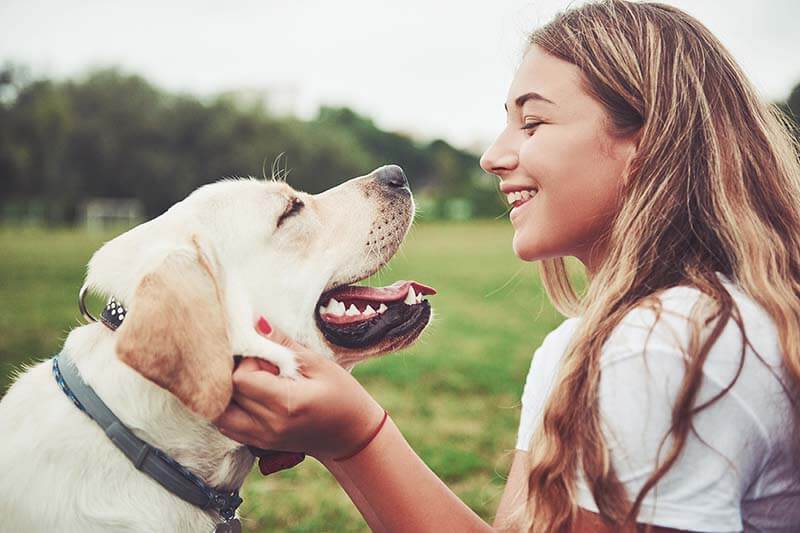The new year often brings motivation for a healthier lifestyle for most people. But, have you thought about how to improve your four-legged friends’ health? Just like humans, it’s important that pets have daily healthy routines.
Exercise, nutrition, and enrichment are all important aspects of your furry friend’s well-being. While humans can make personal choices in their health, animals rely on their owners. Here are five tips for improving your pet’s health.
1. Choose Healthy Foods
Have you recently embarked on a healthy eating journey? If so, you probably know how stressful it can be to make smart dietary choices. Maybe you’ve decided to explore healthier options for your pet. But, dog food labels are terribly confusing.
There are often additives with complicated names. Unfortunately, these can include plastics, starchy fillers, and even meat meal carrying diseases from animals. With confusing labels, it’s difficult to find dog food you can trust.
To avoid scary ingredients, try fresh dog food. Made with whole ingredients, this option is jam-packed with nutrients. Whether they need to lose a few pounds or have food allergies, your dog can enjoy grub that’s tailored specifically to their needs.
Fresh foods provide dogs with tasty meals that are nutritious and filling. Some services even offer delivery, so it will show up on your doorstep. It can save you time, and it’s simple and healthy for your dog.
2. Provide Regular Exercise
Believe it or not, your pets need regular exercise for more reasons than burning energy. Participating in activity can reduce obesity and prolong their life expectancy. Exercise can also be a form of mental stimulation. Just like for humans, being active can combat anxiety.
According to the American Kennel Club, the amount of exercise a dog needs can vary based on their breed. However most experts recommend that dogs have at least 45 minutes of physical activity per day. Some dogs need up to two hours per day. This activity could be playing with other dogs or going for a brisk walk with their owner.
While cats do not need as much exercise as dogs, they should spend around 30 minutes per day being moderately active. To keep cats active, try purchasing a climbing tree or agility course. Exercising your pets doesn’t need to be complicated. When in doubt, grab their favorite toy and play fetch for a while.
3. Encourage Socialization and Stimulation
An unsocialized dog can be a great threat to their own health and the health of pets around them. You want your pet to be able to react to the world around them without fear or aggression. It is vital that you begin socializing your dog at a young age. However, it is certainly possible to do it later in life. If needed, work with a professional dog trainer who can help you meet your dog’s needs.
Stimulating your pet’s brain through enrichment activities provides them with a creative outlet. Enrichment ideas could include puzzles and lick pads. Try rotating your pet’s favorite toys in and out of use. Teach them a new trick like how to high-five or army crawl. Regardless of your enrichment tactics, a well-enriched pet often leads to a more obedient one.
4. Practice Seasonal Pet Care
Just as you put on a coat when it gets cold outside, some elements of pet care should change with the seasons. While some breeds thrive in colder temperatures, others experience great sensitivity to cold weather. Your pet’s paws are typically most vulnerable to cold and hot surfaces like asphalt. If you’re in an area that experiences ice, watch out for ice melt that can damage their paw pads.
Holidays can also provide health risks for your furry friends. During the 4th of July, make sure your pet has updated tags and stays indoors in case they’re spooked by fireworks. Around Halloween and Thanksgiving, be sure that your pets do not eat candy or other dangerous foods. If your dog or cat consumes one of these items, you may want to call your local emergency vet clinic.
5. Schedule Routine Vet Visits
Maintaining your pet’s health also means routine vet visits. Visiting your veterinarian on a yearly basis can catch any abnormalities. Vets will typically require a feces sample during your pet’s visit. This is to check for any intestinal diseases like parasites or eggs.
They will check your animal’s eyes, coat, and paws. Typically, vets will make sure that your dog or cat’s joints are functioning properly. Some clinics will even do routine teeth cleanings at these visits.
If you have a puppy, your vet might require more frequent visits until they are 16 weeks old. Vets will typically perform a physical and administer any needed vaccinations. Vaccines are a great way to ensure your puppy grows up healthy and protected against diseases.
If you have concerns for your pet’s health, schedule an appointment immediately. There’s no need to wait until your yearly appointment if your pet is experiencing an illness or injury. Make sure your pets are eating and drinking regularly, and check their eyes, nose, and breathing for signs of sickness. Just like humans, pets can get a runny nose, and if they stop eating, it could be a sign of illness.
Maintaining your pet’s health doesn’t have to be a difficult process. Remember that both their mental and physical health are vitally important. Try taking your four-legged friend for a walk around the block. Explore a new park together. Or, solve a puzzle during their meals. If a health issue arises, consult with your vet. Otherwise, use these tips for maintaining wellness.

